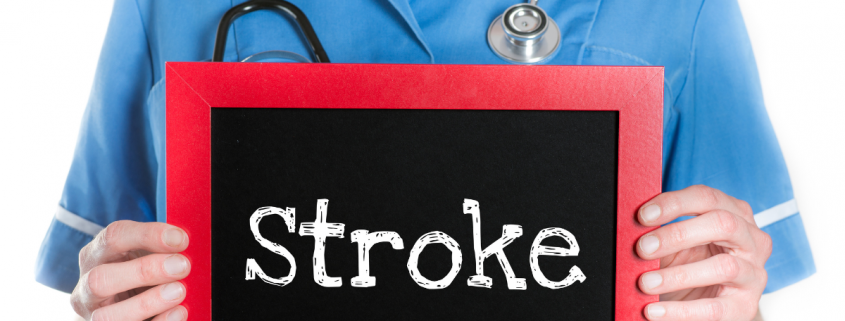Exploring the Different Types of Stroke and Treatment Options
A stroke is a medical condition that occurs when blood flow to the brain is halted. The brain requires a constant supply of oxygen to maintain its functions. If the flow is stopped even for a short time, the brain will start dying.
There are several different types of stroke. It is essential to have a comprehensive understanding of the different types of stroke and treatment to provide appropriate medical care, prevent future incidents and plan effective rehabilitation for the patient.
Types of Stroke
Ischaemic Stroke
What is an ischaemic stroke? Ischaemic stroke is one of the most prevalent types of stroke and occurs when a major blood vessel in the brain is blocked. Some of the factors that can cause the blockage include blood clots, fatty deposits and cholesterol (known as plague).
Ischaemic stroke has two subtypes: thrombotic and embolic stroke. A thrombotic stroke occurs when a blood clot forms within one of the arteries that supply blood to the brain. Embolic stroke, on the other hand, occurs when a blood clot or other debris forms somewhere else and travels to the brain via the bloodstream.
READ MORE: What is an Ischaemic Stroke?
Symptoms
The symptoms of ischaemic stroke vary depending on the part of the brain affected and the level of damage caused. Here are the common symptoms:
- Face drooping
- Arm weakness
- Speech difficulty
- Loss of coordination
Risk Factors
- Smoking
- Hypertension
- High cholesterol
- Diabetes
- Age
- Obesity
Haemorrhagic Stroke
Haemorrhagic stroke is another common type of stroke that occurs when bleeding occurs directly in the brain. The leakage can lead to damage and pressure on the brain’s tissue. There are two primary types of haemorrhagic stroke: intracerebral and subarachnoid haemorrhage.
Intracerebral haemorrhage occurs when a blood vessel within the brain bursts and leaks blood into the surrounding brain tissue. Subarachnoid haemorrhage, on the other hand, refers to the bleeding between the brain and surrounding tissues that protect it (the subarachnoid space).
Symptoms
- Nausea and vomiting
- Sudden severe headache
- Weakness and numbness
- Loss of consciousness
- Speech difficulties
Risk Factors
- Aneurysms
- Blood-thinning medications
- Head trauma
- Hypertension
Transient Ischemic Attack (TIA)
A transient ischaemic attack refers to a temporary disruption of blood flow to the brain. It is commonly referred to as a ‘mini-stroke’ because, unlike a full-blown stroke, it doesn’t lead to permanent brain damage. However, it is essential to know the signs of a TIA and take them seriously, as they may indicate a brewing problem within your blood vessels. Here is how TIA differs from the other types of stroke:
- The symptoms are similar to those of full-blown stroke but are temporary
- It causes mild damage compared to full stroke
- Signs of a TIA can be subtle and transient, which makes diagnosis challenging
- Immediate recovery
Common Risk Factors for Stroke
Hypertension
Hypertension weakens and damages blood vessels, making them highly susceptible to blockage and rupture, thus increasing the risk of stroke.
Smoking
Smoking promotes the formation of blood clots, damages blood vessels and contributes to the development of atherosclerosis, which increases the risk of stroke.
Heart disease
Heart conditions, such as atrial fibrillation and coronary artery disease, can increase the risk of the formation of blood clots, which could travel to the brain and cause a stroke.
Diabetes
High blood sugar levels cause damage to blood vessels and increase the risk of atherosclerosis. These conditions increase the likelihood of stroke, especially ischaemic strokes.
Obesity
Obese people are at a high risk of developing conditions such as diabetes, hypertension and high cholesterol. These are the primary risk factors for stroke.
5 Things to Do to Prevent Stroke
Lose Weight
Excessive weight lead to complication, such as high blood pressure and diabetes, which increase your likelihood of suffering a stroke. So, work with your doctor to create a weight loss strategy that works for you and improves your body mass index.
Moderate or Stop Drinking
Excessive drinking can trigger atrial fibrillation, which increases the risk of a stroke. So, moderate or stop drinking alcohol if possible. Reduce alcohol intake to one glass a day and consider red wine as your first choice as it helps reduce heart disease.
Quit Smoking
Smoking can thicken your blood and increase the amount of plaque that builds up in arteries. That can quickly accelerate clot formation. So, if you want to reduce the risk of suffering a stroke, stop smoking as soon as possible.
Treat Diabetes
High blood sugar can cause damage to blood vessels. So, it is essential to keep your blood sugar under control. Monitor blood sugar, use diet and stick to medications that keep blood sugar at a recommended level.
Exercise More
Exercise helps you lose weight and lower blood pressure. So, consider light exercises, such as walking, taking the stairs (instead of the elevator) and morning runs. You can also sign up for gym sessions.
Conclusion: Treatment for Stroke
To complete our guide to types of stroke and treatment, we will discuss a thing or two about treating the condition. It is essential to understand that stroke is a medical emergency, and the quicker the response, the less the damage to the brain. So, in the event of any signs of stroke, it is essential to seek medical attention as soon as possible.
In the case of ischaemic stroke, the doctor will administer thrombolytic therapy with tissue plasminogen activator to dissolve blood clots and restore blood flow to the brain. They can also use endovascular therapy, which helps physically remove clots from blocked arteries. For haemorrhagic stroke, doctors will control blood pressure to prevent further bleeding. If the situation is serious, they may resort to surgical intervention to address the underlying issue of bleeding.
Long-term rehabilitation is essential for stroke patients as it helps reduce the risk of recurrence and speeds up their recovery period. The rehabilitation periods include physical, occupational and speech therapy. Contact Veritas Care today for a complete care assessment for stroke patients and more information on the different types of stroke and treatment.















